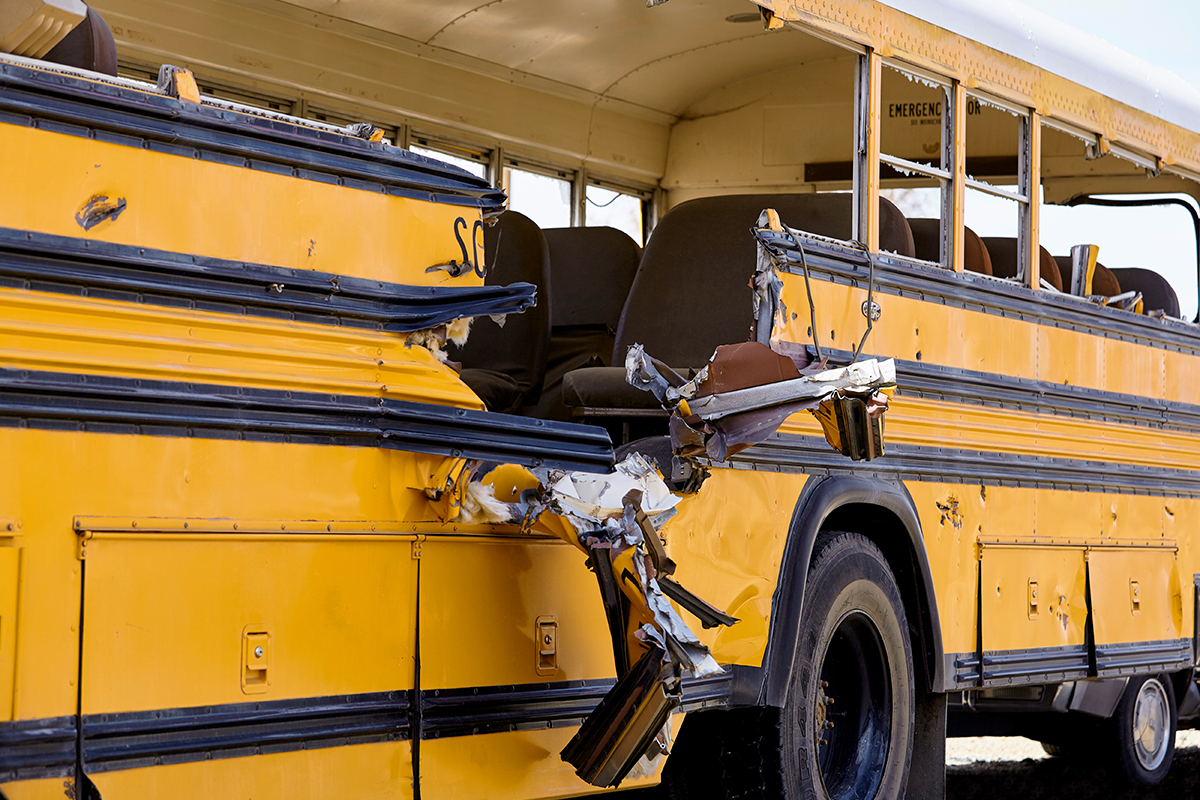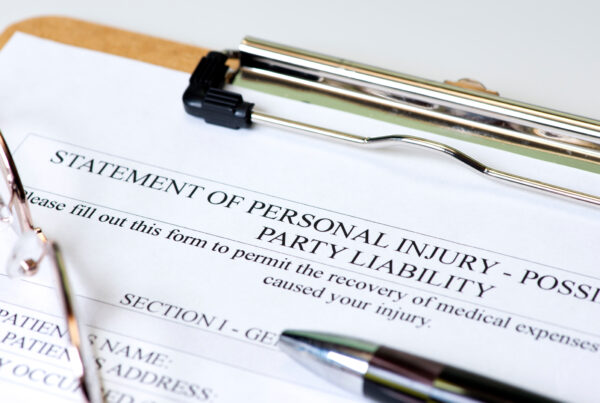From 2007 to 2016, the National Highway Traffic Safety Administration found 1,147 fatal motor vehicle traffic crashes classified as school-transportation-related. Although spread over ten years, 1,282 people killed in school-transportation-related accidents are incredibly high and preventable.
Using caution and situational awareness is vital in protecting the most vulnerable population – children. As more students return to school, all drivers, including bus drivers, must maintain a strict awareness of the road. As COVID-related restrictions ease, more schoolchildren are taking school buses to and from school.
In this article, our personal injury experts will discuss how these school bus accidents happen, how they can be prevented, and what to do if you’ve been in a school-transportation-related accident.
How Do Bus Accidents Happen?
School bus accidents, while rare, can be devastating. Accidents occur for many reasons, but most are preventable. Inside the bus, students must be sure not to distract the driver, and the driver must maintain awareness while driving. Distracted driving has no place in any car and not while driving schoolchildren. Outside the bus, drivers on the road must be conscious of their surroundings. Distracted driving, not yielding to stopped buses, and not ensuring children have crossed the street before accelerating are all preventable causes of bus accidents.
What are the Common Causes of School Bus Accidents?
Buses have been manufactured to be sturdy and safe, but some vulnerabilities can lead to accidents:
- Wide Left Turns
- Damaged Equipment
- Road Conditions
First, buses must make wide left turns, and it takes a considerable amount of time for a bus to make a turn. It is imperative as drivers when sharing the road with a school bus that we remain vigilant and ensure to not approach a turning bus too quickly.
With its long and wide frame, buses may need to conduct a three-point turn if they do not have enough space to make a standard left turn; this may cause the bus to stop. While it may be inefficient or frustrating, giving the bus space to make this turn is necessary. A car hitting the side of a bus, where children are sitting, just because a driver ‘thought’ the bus would have turned by the time they caught up, can be devastating.
Second, equipment must be well-maintained by the school bus company. All companies have dedicated mechanics and technicians who devote their time to ensuring all equipment is in top condition. However, as we have all experienced, good maintenance cannot stop some failures.
For example, if a school bus’s stop-sign extender fails mid-route, a bus operator may need to extend this manually or count on other drivers to heed the rules of the road when they see the front arm and lights activate at a stop. The safety of children embarking on and disembarking a school bus is of utmost importance – this is also where most accidents happen.
Last, road conditions play a big part in the potential for bus accidents. First, weather-related accidents are possible, usually in the winter. Icy and snowy roads already force drivers to increase their braking time. Still, with buses having a long brake time as-is, similar to semi-trucks, wintery conditions can lead to rear-end and other sliding-related accidents with buses.
Road conditions such as tight turns, potholes, and lane closures can result in bus accidents. As discussed, buses are larger than regular cars and take wider turns. Bus drivers must use caution when traversing right turns or narrow lanes to ensure they do not damage the bus. However, other drivers sharing the road must also avoid following too closely or accelerating too quickly toward bus drivers on a turn.
What Kind of Injuries can Occur in School Bus Accidents?
Common car accidents with buses include t-bone accidents on a turn in an intersection, rear-end accidents, and pedestrian-related accidents – usually with a driver hitting a schoolchild after the child disembarks the bus. Common child injuries in school bus accidents vary in severity and may include various forms of traumatic brain injuries, coup-contrecoup brain injuries, broken bones, lacerations, and emotional distress.
How Often Do School Bus Accidents Happen?
According to data from the National Highway Traffic Safety Administration (NHTSA), less than one percent of all fatal motor vehicle crashes were related to school transportation between 2007-2016. The majority of those injured or killed by a school bus were either occupants of the other vehicle involved, or were pedestrians or cyclists. Although fatalities are limited, there is a greater chance of experiencing an injury from a bus accident. While national school bus accident rates are low, an accident with a bus can result in extreme injury or death.
How Can School Bus Accidents Be Prevented?
It is impossible to avoid every potential accident, but taking steps to ensure that we, as drivers sharing the road with buses, are aware and cautious will help reduce accidents.
Distracted driving, while not illegal in every state, has no place on our roads. The lives of our schoolchildren are at risk, and we encourage all drivers to put their phones down and pay attention. Along that line, awareness is key in determining your speed – if a bus turns left, drivers must slow down to allow for the bus to stop, if needed, but mainly since it takes buses longer to turn. Last, drivers must always pay attention when buses stop – children will likely be disembarking, and no driver should move until all children have exited the bus and the driver retracts the stop sign and safety bar.
What is the Role of the Bus Driver in Preventing School Bus Accidents?
Every driver has a role in preventing accidents by following the rules of the road, especially those with school buses. The bus drivers themselves also have a large responsibility in preventing accidents and injuries for those students in their care and should always follow the proper safety measures for school buses. School bus driver error can be a major cause of an accident, whether it’s not following traffic laws and speeding or adjusting their driving technique based on road conditions or weather. The bus driver is also responsible for following safe loading and unloading protocols and ensuring students do so, as well. Drivers should also be well-trained in emergency preparedness to keep students safe in the event of an accident or other issue. Of course, as in any driving situation, the bus driver should be aware of their surroundings, checking blind spots and mirrors, using caution at intersections, and having eyes on children they are picking up or dropping off.
Consult With Experts In Personal Injury Law
If you or a loved one has been injured in a school bus accident, don’t hesitate to get in touch with the dedicated lawyers at The Simon Law Firm, P.C. with expertise in personal injury and car accident lawsuits. Our firm proudly advocates for the safety of children and will stand up to any insurance company that defends a driver’s negligent actions. Sometimes situational awareness is not enough. In the unfortunate event that children are injured, our bus accident injury attorneys will guide and counsel families to understand their potential actions, support them in the litigation process, and fight by their side for justice.







